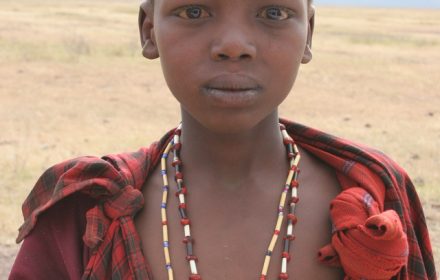Bomas of Kenya is Kenya in miniature representing the country on a small scale. While for foreigners, Bomas of Kenya consist of traditional virtual villages and mud huts spread over many acres each representing the remote communities of the country, for residents, it is a spectacular afternoon out. Hence, it is a very popular tourist attraction for foreigners and locals alike. In 2003, the Bomas of Kenya hosted the National Constitutional Conference’s first meeting. It produced the Bomas Draft of the new constitution making it a high-profile historical site. Bomas of Kenya is situated 10km from the city of Nairobi.
Articles by V
In 1962, Karen Blixen died of malnutrition at the age of 77 in Rungsted, her family estate. Many languages still publish her books even after her death. But the world best knows her as the author of Out of Africa. In one of the former homes in Karen, the suburb where she lived in Nairobi, Kenya, is a Karen Blixen Coffeehouse as well as a Museum. Karen Blixen Museum in Karen is the site of the original farmhouse of Karen Blixen. The Museum is half a mile from the Karen Country Club where guests can enjoy squash, tennis, and golfing.
The building that today houses Nairobi Gallery was constructed in 1913. The location was Point Zero. The colonial government measured the distances to all areas of the country from this point. Point Zero is an octagonal atrium in the center of the gallery. A Clay Vessel by Lady Magdalene Odundo graces the entrance of the building. Lady Odundo was a renowned Kenyan ceramist. For her works, she received from the Queen of England the distinction of OBE and the only Kenyan to have received it. Today a gourmet café by the same name is an exciting item of the Gallery.
In 1910, some naturalists and colonial settlers instigated Nairobi National Museum to keep their collections of various specimens. The first site soon became too small. Hence a bigger building was constructed in 1922 which is today the Serena Hotel. In 1929, the then government set aside land for the construction of a museum at Museum Hill. The 22nd of September 1930 saw the opening of the museum. In honor of the former Governor of Kenya, Sir Robert Coryndon, they named it Coryndon Museum. But they renamed it on the attainment of independence in 1963 as the National Museum of Kenya.
The first railway was in the port of Mombasa. Track recovered from the Central African Railway supplemented the original route. After leaving Mombasa, the rail had to go through a painfully slow job because two man-eating lions held up the construction. Eventually Lt. Colonel, Patterson hunted and shot them down. He describes his experiences in his book Man-Eaters of Tsavo, dramatized in the movie The Ghost and the Darkness in 1996. Their stuffed carcasses of are now on display at the Field Museum Chicago. And a box in the Railway Museum contains three claws clipped from one of the lions.
Mystery, myths, and legends shroud the Maasai history. Much of their early origins come from their vibrant oral traditions. There is a lack of written sources. This indigenous pastoral society often passed on their traditional knowledge in the form of folktales, stories, songs, poetry, and chants. They contain knowledge about traditional medicine, landscape ecology, grazing practices, the behavior of animals, gathering of wild plant foods, and livestock management. Their origins are limited to our knowledge of them from the past few centuries. Maasais still hang on to their shukas, masks and religion that quintessentially serve as relics of their past.
This is a sneak preview into the personal lives of Maasais. Maasai music has no instruments. They use grunting vocals of two different contrasting rhythms. The lead singer calls out something, and the rest would repeat it. Maasai dancing is fascinating. Singers stand in a line. Then each person jumps as high and as long as they can. Some dancers pay close attention; others just giggle, and some others talk to their co-dancers while dancing. Their death is without a formal funeral service. Burial has been reserved only for chiefs since Maasais believe that burying people is harmful to the soil.
A Maasai’s entire life revolves around livestock. Maasais extract cow blood as follows. Once a month, they take out blood from cows pretty much like people giving blood. They make the jugular artery on the cow’s neck swell by tightening a noose around its neck. At close range, one of them fires a short, blunt arrow from a loosely-strung bow puncturing the vein of the cow. They then collect the blood in a gourd. They stop the bleeding with a wad of dung and mud. In recent times, consumption of blood is waning due to the reduced numbers of livestock.
The Maasais are considered to be cattle herders of Africa. Population growth, development strategies, and a shortage of land have declined cattle raising. However, for many traditional Maasais, cattle are still the breath of life. Adaptation to rapid economic and social change is the greatest challenge the Maasais face. Increased land encroachment threatens their traditional way of life. Sooner or later they would have to come to terms with integrating into the modern economies and political systems. As a result of the challenges faced by the Maasai, there are many support groups and non-governmental organizations working in collaboration with Maasais.
Maasai ceremonies between circumcision and marriage serve to maintain their age-set classes of social system and political culture. But they do not distinguish age or time similar to the advanced and more modern ways. They approximate time in fourteen-year sections. Maasai ceremonies and traditions mark the age-sets in their strictest form. One of the most important Maasai initiation is Emuratare elevating the boys from childhood to adulthood. The fourteenth year culminates in Emuratare or circumcision and the 28th year in Eunoto or marriage. And in between these years, they are warriors with the responsibility of defending the territory where they live.

![B[/su_dropcap]omas of Kenya is Kenya in miniature representing the country on a small scale](https://www.safari-center.com/wp-content/uploads/2017/03/Bomas-of-Kenya-440x280.jpg)








